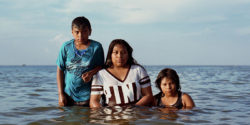Mexico and Estonia; an unlikely couple. But sometimes love is like that. In a time when orthodoxy globally is seemingly self-combusting and obviously falling short in meeting the needs of people, it is perhaps no surprise that the unique hybrids of shared strengths are those that arise and can lead.
Consider “Mextonia”.
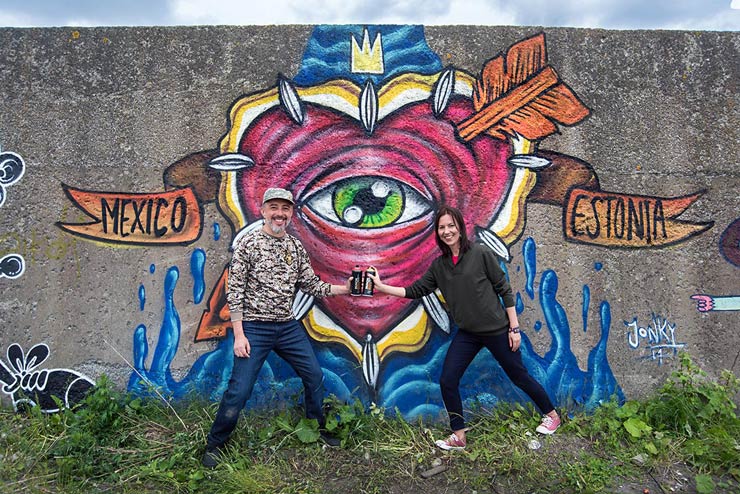
Édgar Sánchez and Sigre Tompel. Mextonia Co-Founders. Mextonia Part 1. Tallinn, Estonia. June 2017. (photo © Martha Cooper)
A cultural love child combining the traditions of these two nations has resulted in a surprising amount of cross-cultural exchange and mural making in the last year or two. Today we have just some of the artworks made during a two-part event held in each country, the first in Tallinn, Estonia in June 2017 and the second in Querétaro, Mexico during March 2018.
The unlikely pairing by two sociological searchers who love graffiti, Street Art, and the mural traditions of the past as much as the modern mural phenomena now speaks a common language of aesthetics in multiple spheres.
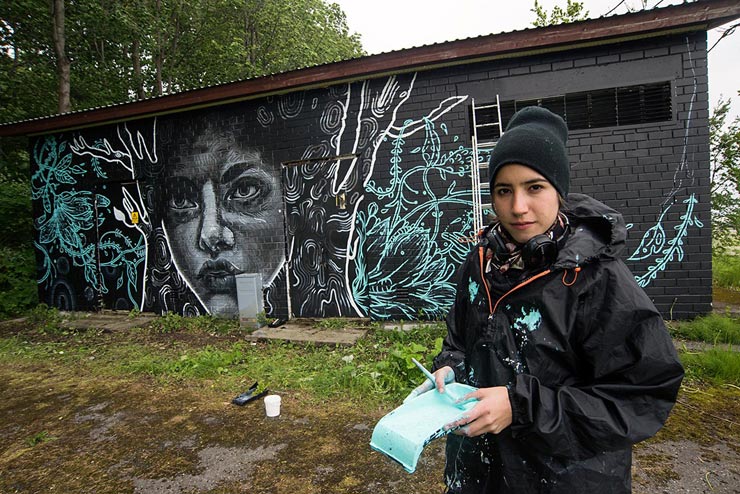
Renata Mtz. Mextonia Part 1. Tallinn, Estonia. June 2017. (photo © Martha Cooper)
Together Édgar Sánchez and Sigre Tompel have mounted two large cross-culture jams, attracting numerous artists and trans-national interpreters (nearly 100), presenting and renewing interests in history, indigenous people, traditions, and the environment challenges of today.
By highlighting the similarities and distinct differences in traditional and modern culture, these two are the magnetic field around whom a multi-faceted public art practice is developing that showcases urban and mural artists.
You haven’t seen a hybrid like this before.
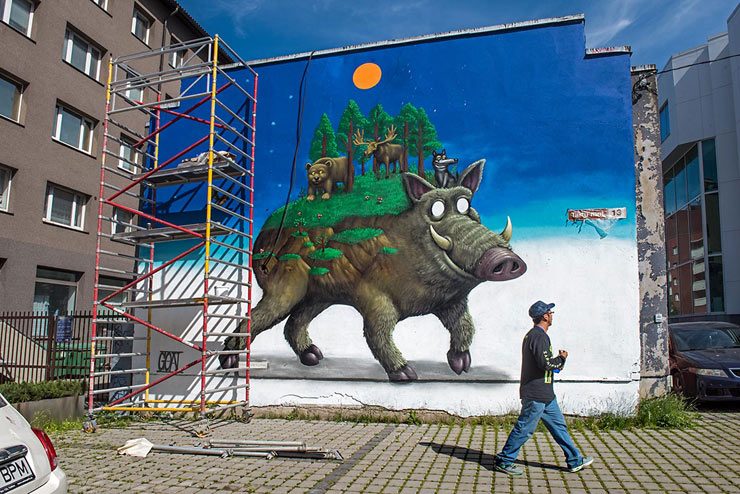
Goal. Mextonia Part 1. Tallinn, Estonia. June 2017. (photo © Martha Cooper)
Together the two say that the effort is “a reminder of what makes us feel proud of being Mexicans, Estonians, and even better, what unites us beyond our nationalities: our cultural freedom. Our responsibility of making this place, this world, a better place than how we found it.”
The enterprise is frequently steeped in metaphor and symbolism and a search for meanings in the overlapping of traditions. One that is often sited is the Blue Deer/Fern Blossom intersection.
In México, according to ancient Huichol tribe tradition, people go to hunt Blue Deer to search for wisdom and inner vision. Searching is also involved in the Estonian ancient tradition of searching for the Fern Blossom that is said to appear only during the summer equinox of June, which they call Jaaniöö. Both traditional cultural stories represent prosperity, protection and fertility, they say.
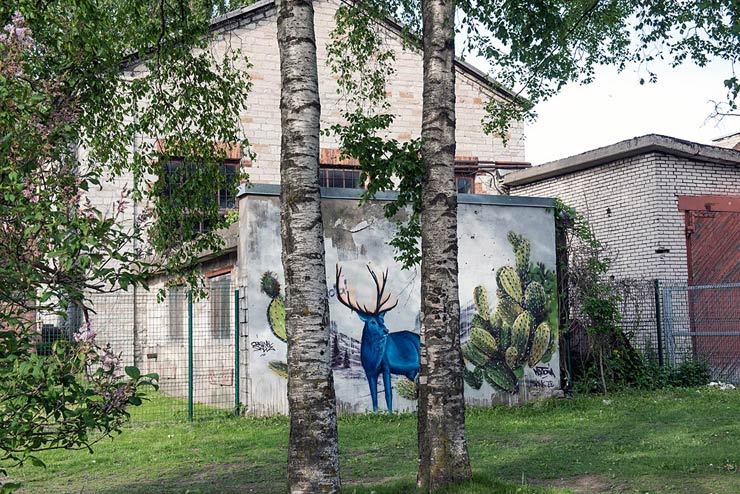
Sänk. Mextonia Part 1. Tallinn, Estonia. June 2017. (photo © Martha Cooper)
“Mextonia is a gift to remind the world about the Spirit; a collective soul in the shape of a Blue Deer, in finally finding a Fern Blossom,” say Sánchez and Tompel.
For Mr. Sánchez, the Mexican co-creator and author of the Mextonia Manifesto, there is a belief that there are larger forces at work in the Universe and that Mextonia is a platform and vehicle for the new generation.
When reading his observations you will see that the platform is hoping to lead Millennial artists to reconnect with a sense of culture and identity, two things that are sadly slipping away due to the dopamine-laced fire hose of mass media stimuli, social and otherwise, that we are collectively exposed to.
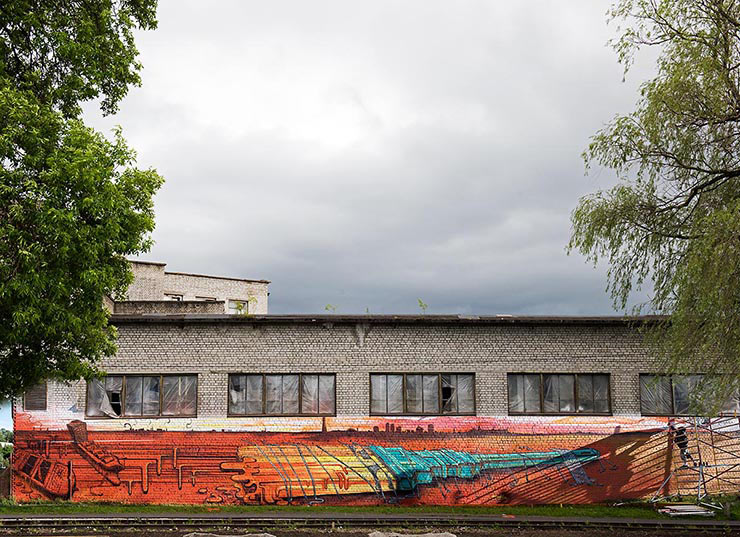
Brushleee. Mextonia Part 1. Tallinn, Estonia. June 2017. (photo © Martha Cooper)
For Tompel, the Estonian co-director of this bi-national transcultural journey, “Mextonia was born from a personal ‘vision quest’ to better understand the native wisdom of Mesoamerican natives.”
She says the enthusiasm and knowledge of Sánchez guided her to better appreciate ancient traditions like those of the Mexican Huichol tribe, and that this new appreciation enlivened her interest in her own homeland of Estonia, which she began to study in earnest. Together, the two of them have poured the molten iron of their combined roots and cast a foundation that many artists are now adding their interpretation to.
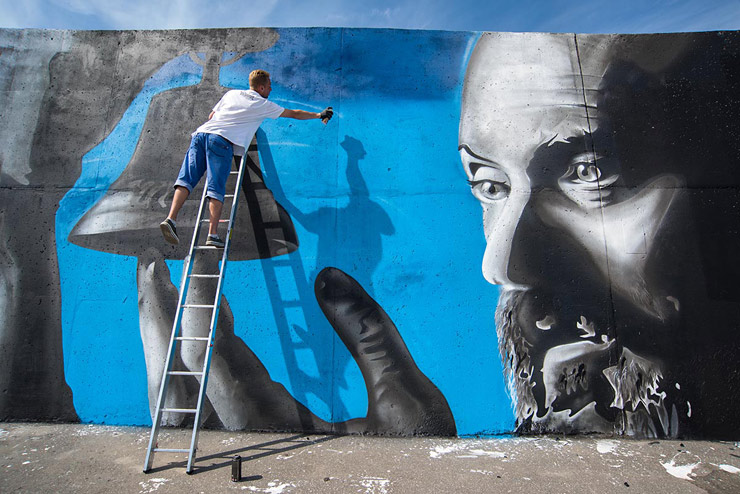
Markus Richard Tallvee. Mextonia Part 1. Tallinn, Estonia. June 2017. (photo © Martha Cooper)
Whether it is costume or symbols or rites or ceremony, you can see a deep desire to be inclusive in the styles and expressions. The spring festival, for example, extended its message with the collaboration with the PangeaSeed Sea Walls effort, headed by Tré Packard and his team in pursuit of “combining art and activism on this level and caliber to champion for the oceans,” and often sited aspiration.
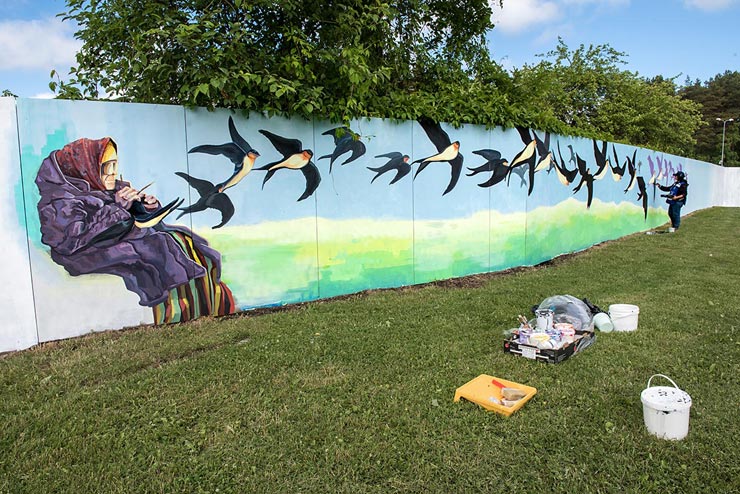
Tania Quezada. Mextonia Part 1. Tallinn, Estonia. June 2017. (photo © Martha Cooper)
“Art and public activism can educate and inspire the global community to help save our water resources,” says Packard. “Regardless of its location, large metropolitan city or small coastal town, all drains lead to the ocean and the ocean provides every breath we take. The Earth cannot exist without healthy oceans and water resources.”
With this in mind the city of Querétaro was chosen for the multiple aqua-related public artworks as a way to draw attention to the city’s own reliance on water that is transported from a hundred kilometers outside the city. This chapter of “Mextonia” was also known as “Water is One”.
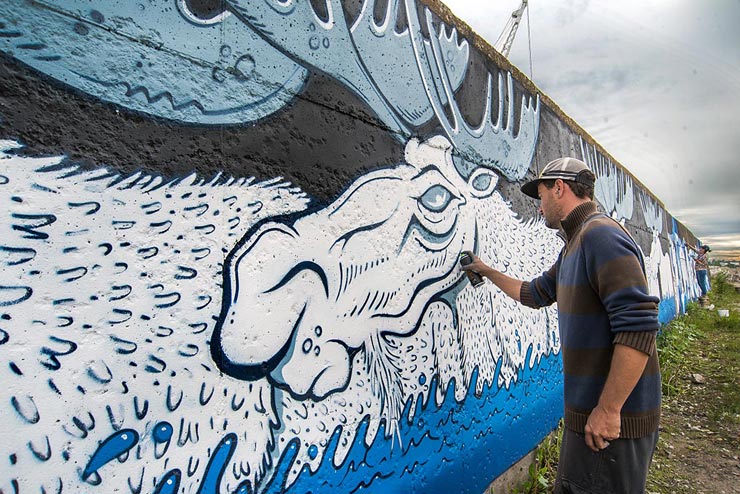
Ricardo Moste. Mextonia Part 1. Tallinn, Estonia. June 2017. (photo © Martha Cooper)
The experience and study has even helped coin new terms, like transgraffiti and transgraffiti muralism.
“Muralism and Street Art have proven to transform cultural symbols and catalyze culture,” says Sánchez. “Now, Transgraffitti is a trans-personal kind of muralism, which distances itself from both; names and pop culture, by taking deep cultural symbols and re-expressing them in a transcendental and contemporary way.”
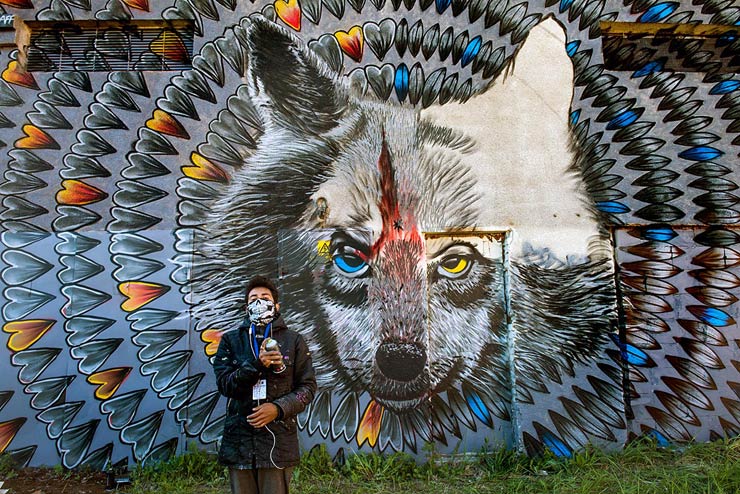
Reyben. Mextonia Part 1. Tallinn, Estonia. June 2017. (photo © Martha Cooper)
In this respect, it is a unique view of Street Artist and graffiti writers in contemporary practice from an evolutionary perspective. In the Water is One Manifesto 2.0 that was released this spring the organizers write:
“In today’s world we see millions of young people expressing on walls, influencing the streets and society. They write their names to identify with their space: we call them graffiti writers. As they grow and explore, some look beyond the writing of a personal name and embark into trans-personal-creation.
They research social challenges, paint visual metaphors and transcend borders. They discover the power of their painting over streets and culture. They become a kind of contemporary shaman, producing street incantations.
This is the transpersonal-graffiti, and we call it Transgraffiti muralism.”
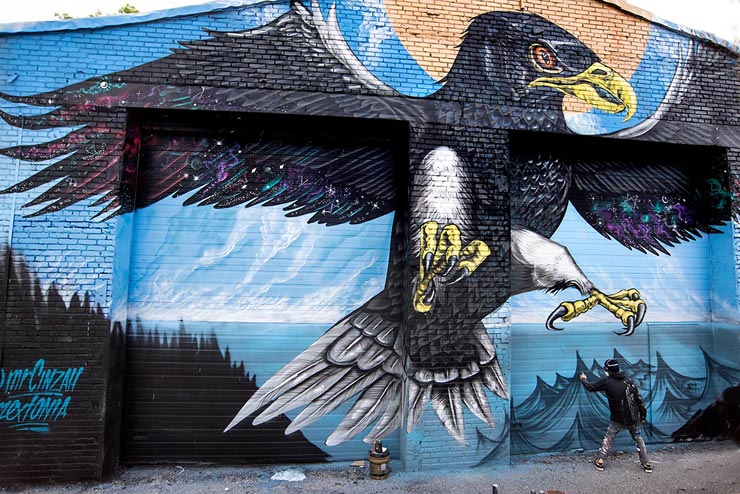
Mr. Cinzah. Mextonia Part 1. Tallinn, Estonia. June 2017. (photo © Martha Cooper)
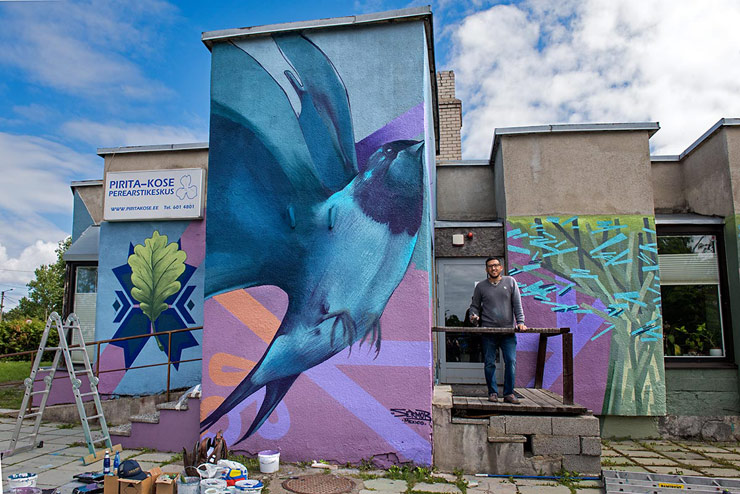
Sermob. Mextonia Part 1. Tallinn, Estonia. June 2017. (photo © Martha Cooper)
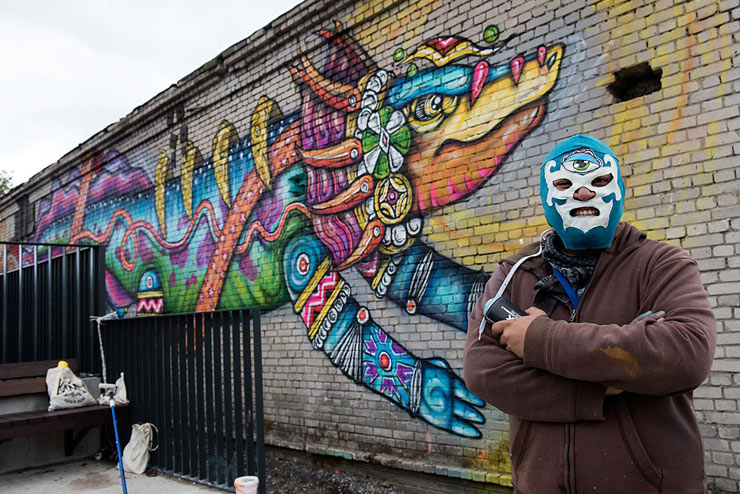
Jonky. Mextonia Part 1. Tallinn, Estonia. June 2017. (photo © Martha Cooper)
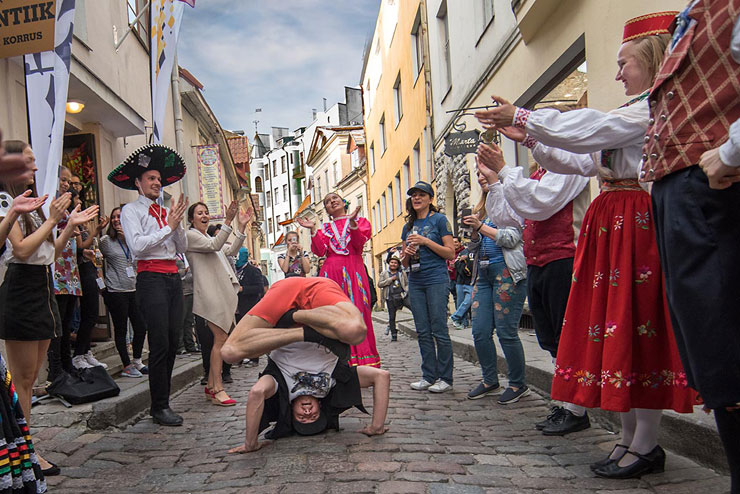
Mextonia Part 1. Tallinn, Estonia. June 2017. (photo © Martha Cooper)
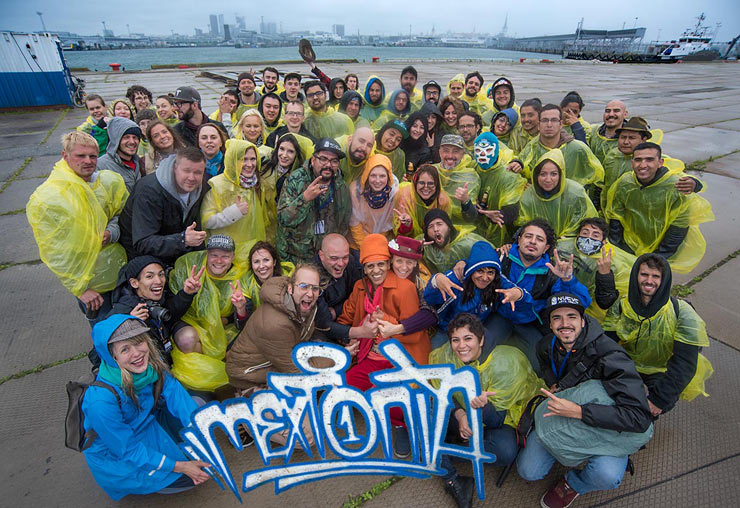
Mextonia Part 1. Tallinn, Estonia. June 2017. (photo © Martha Cooper)
As BSA correspondent from Tallinn and Querétaro, veteran photojournalist and ethnographer Martha Cooper attended the installations, exhibitions, celebrations, and ceremonies in both countries and she collected a wealth of important information to share.
In her own words Cooper says, “Street art is a worldwide art movement and Mextonia has shown how creative two different cultures can be when combined. Excellent idea – brilliantly realized.”
As mentioned Part 2 in Querétaro, Mexico was a collaboration with Pangea Seed and it was a concerted effort to highlight water resources, and “The Water Is One” theme was reflected in the murals.
“We forget that the water cycle and the life cycle are one.”
~Jacques Yves Cousteau

Jason Botkin. Water is One/Mextonia Part 2. Querétaro, Mexico. March-April 2018. (photo © Martha Cooper)
While these 40 or so photos are resplendent in conveying the spirit and dedication shown daily by participants, they are ultimately a very small sample of the hundreds Cooper took.
Similarly a blog platform like this cannot comprehensively cover the events or the perspectives in their entirety, but we hope that you can gain a greater appreciation for the depth of feeling, scholarship, and talent that is represented here in Martha’s photographs and our descriptions.
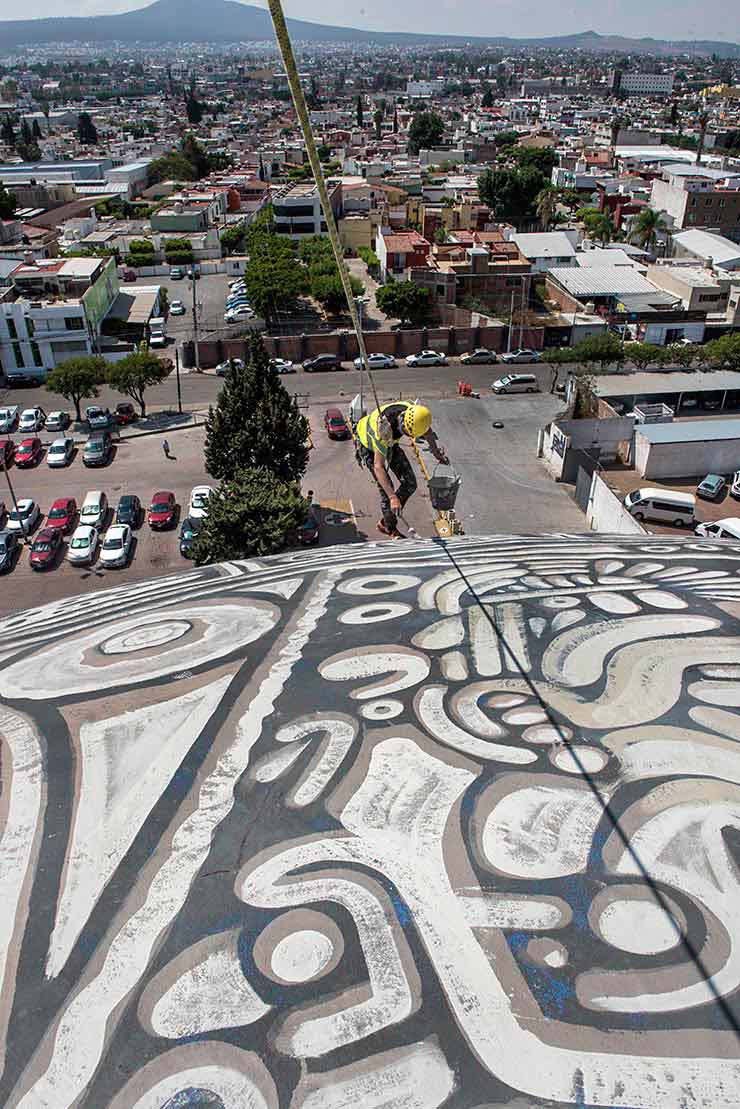
Jason Botkin. Water is One/Mextonia Part 2. Querétaro, Mexico. March-April 2018. (photo © Martha Cooper)
We conclude our text here with an interview that Ms. Cooper conducted for BSA with Sigre Tompel to better understand the breadth of the festival and also to get more detail about a sacred spiritual ceremony that Cooper attended with native peoples and the artists during her Mexican visit this spring.
Martha Cooper: Can we call “Water Is One” in Querétaro Part 2 of Mextonia? Are you planning Part 3?
Sigre Tompel: Yes, it is a sequence of Mextonia, part 2 (Mextonia in Estonia was the element of Fire, Water Is One was the element of Water. Yes, we are planning part 3 and 4 (Earth and Air).
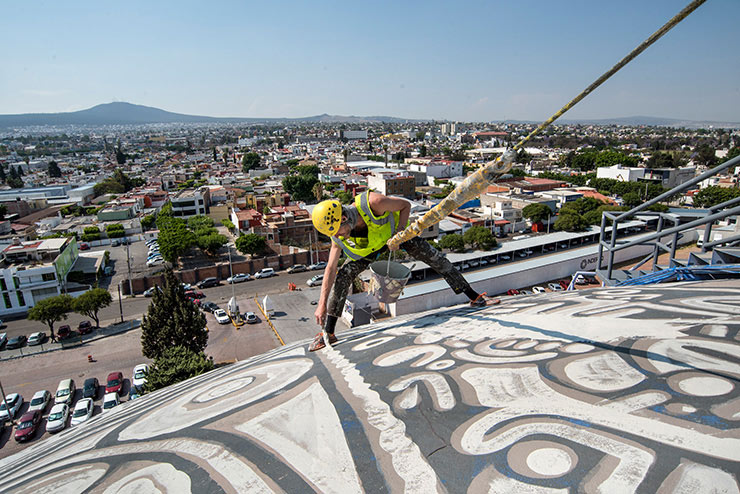
Jason Botkin. Water is One/Mextonia Part 2. Querétaro, Mexico. March-April 2018. (photo © Martha Cooper)
Montreal-based artist Jason Botkin met and exceeded human and creative limits at one point by successfully and arduously rappelling down, up, and around this great dome to recreate an astounding version of the Aztec calendar which can only be appreciated by flying overhead. Ms. Cooper tells us that all artists working on the cupola or dome were required to have a periodic medical check to ensure their good health during the installation of the frescoes.
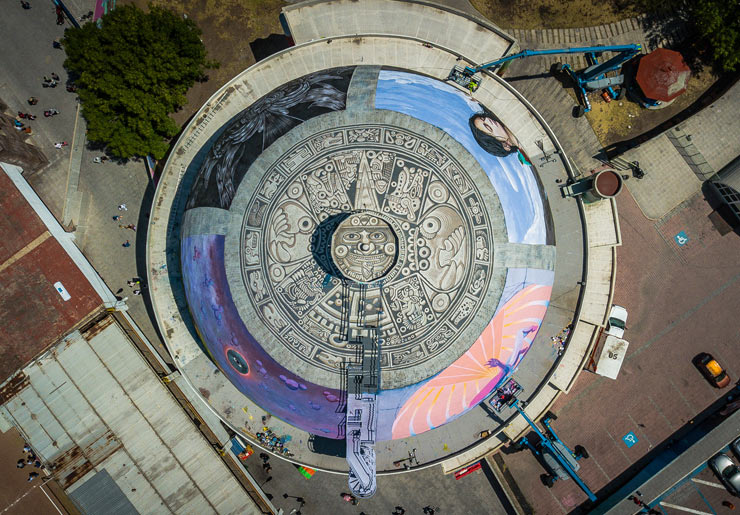
Jason Botkin. Water is One/Mextonia Part 2. Querétaro, Mexico. March-April 2018. (photo © Nueve Art Urbano Team)
Martha Cooper: How many artists participated in both the Estonian and Mexican festivals?
Sigre Tompel: In Estonia we had 60 artists and in Mexico 33 – together with graffiti writers and neighboring walls of the Dome. These 5 artists were actually in both festivals – Aaron Glasson (New Zealand), Sänk (Estonia), Sermob (Mexico), Renata (Mexico), Goal (Mexico). Our whole core crew is a total of 15 people.
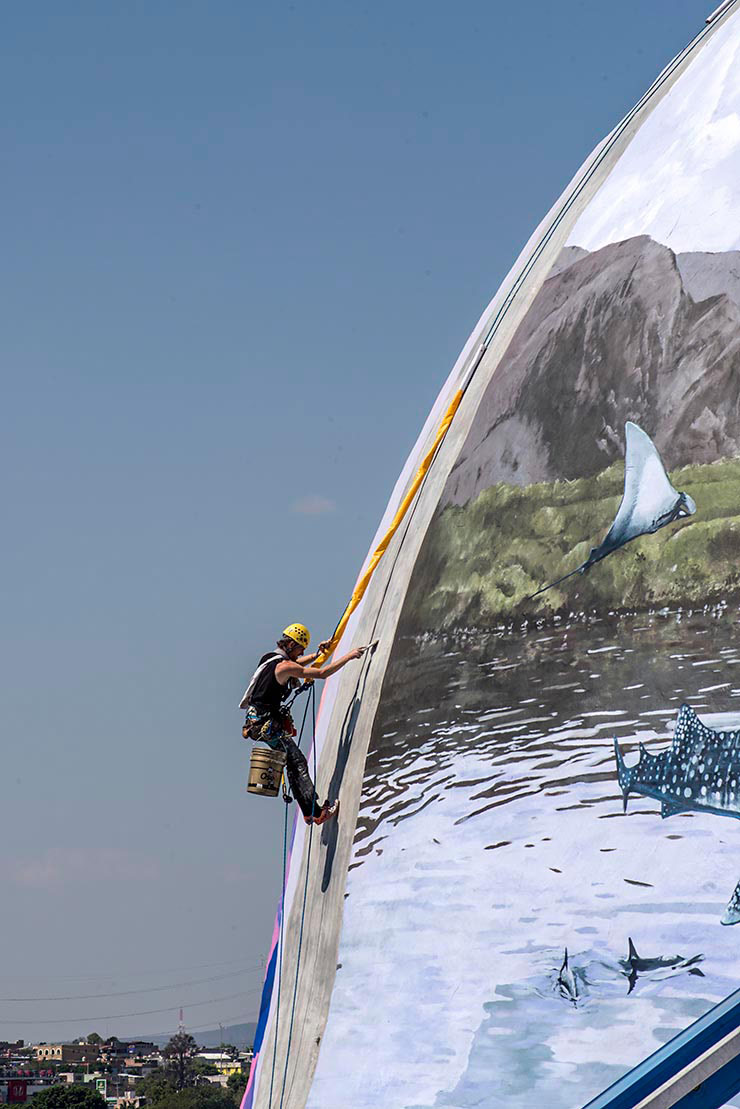
Jason Botkin. Water is One/Mextonia Part 2. Querétaro, Mexico. March-April 2018. (photo © Martha Cooper)
Martha Cooper: What was the name for the type of group that performed the ceremony at the walls? What was burning in the pot that produced the smoke? Copal?
Sigre Tompel: They are called Concheros, they use Copal , smudging for blessing. The message was smudging the artists to thank them for their work and to bless their way back home, so they can arrive healthy and happy. The name of this particular group of Concheros is “In Xochitl In Cuicatl”, Flor y Canto (Flower and Singing) and they are lead by Conchero General Manuel Rodriguez. The name is in Nahuatl, the ancient language of the Mexica.
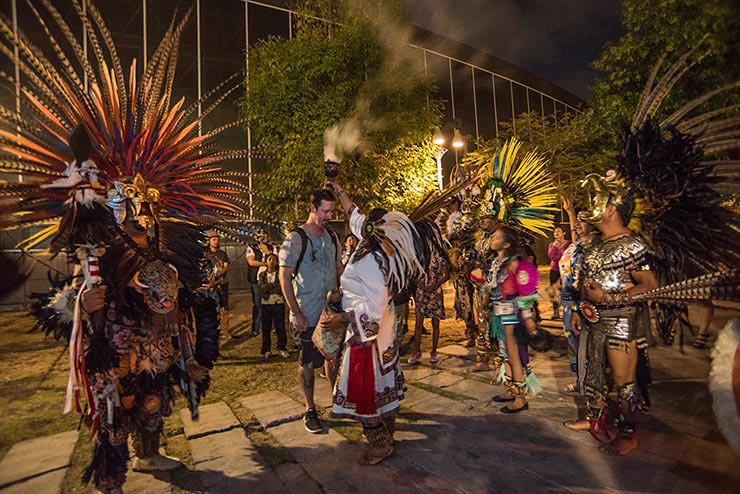
Water is One/Mextonia Part 2. Querétaro, Mexico. March-April 2018. (photo © Martha Cooper)
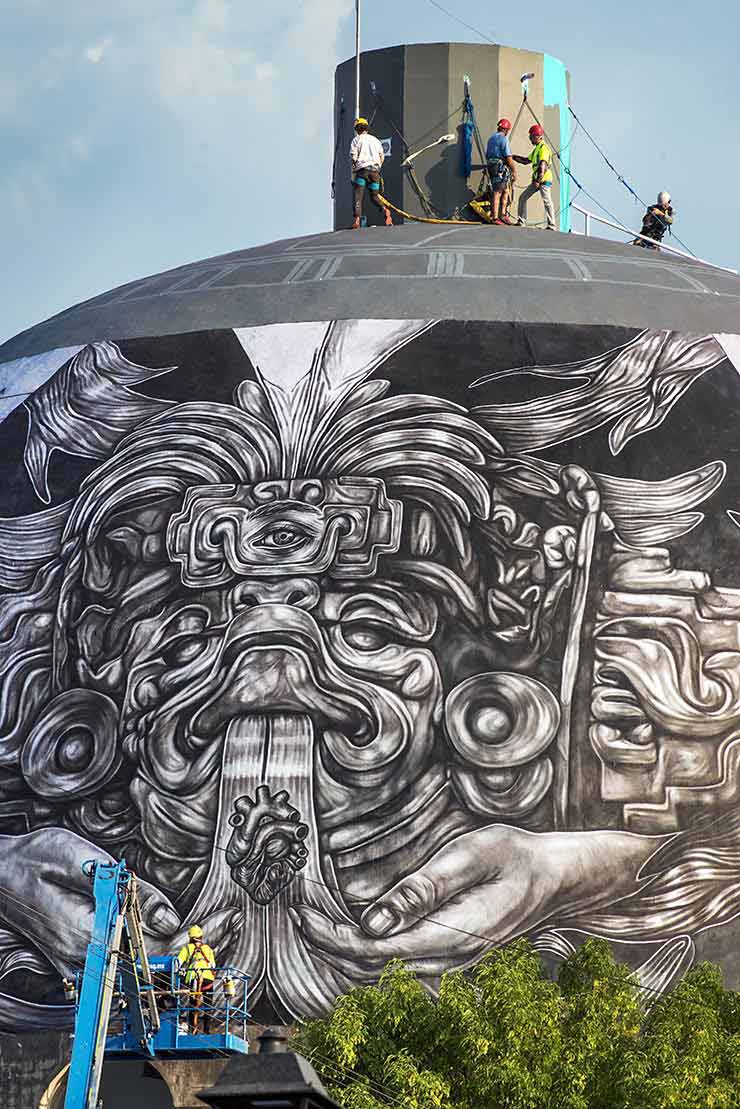
Paola Delfín. Water is One/Mextonia Part 2. Querétaro, Mexico. March-April 2018. (photo © Martha Cooper)
Martha Cooper: Does the ceremony have a name? Can you say a few words about what kind of blessing it was or what message they were sending the artists?
Sigre Tompel: The Concheros hold the tradition of the old Mexican belief system. After being conquered by the Spanish, they decided to hold balance and harmony between the two belief symbols, so they started honoring Christian symbols, while honoring also Mexican symbols, usually in secret. Concheros need to be reconsidered as a Cultural Heritage of the World, they are not “syncretic” by ignorance, but to keep the sacred balance of cultural hybridization.
The Concheros were very happy because the artists expressed the metaphors of their dances into the murals, and because this represents a kind of Mexican renaissance that returns to an earlier time, reinterpreting the ancient classic pre-religious Mexican belief systems.
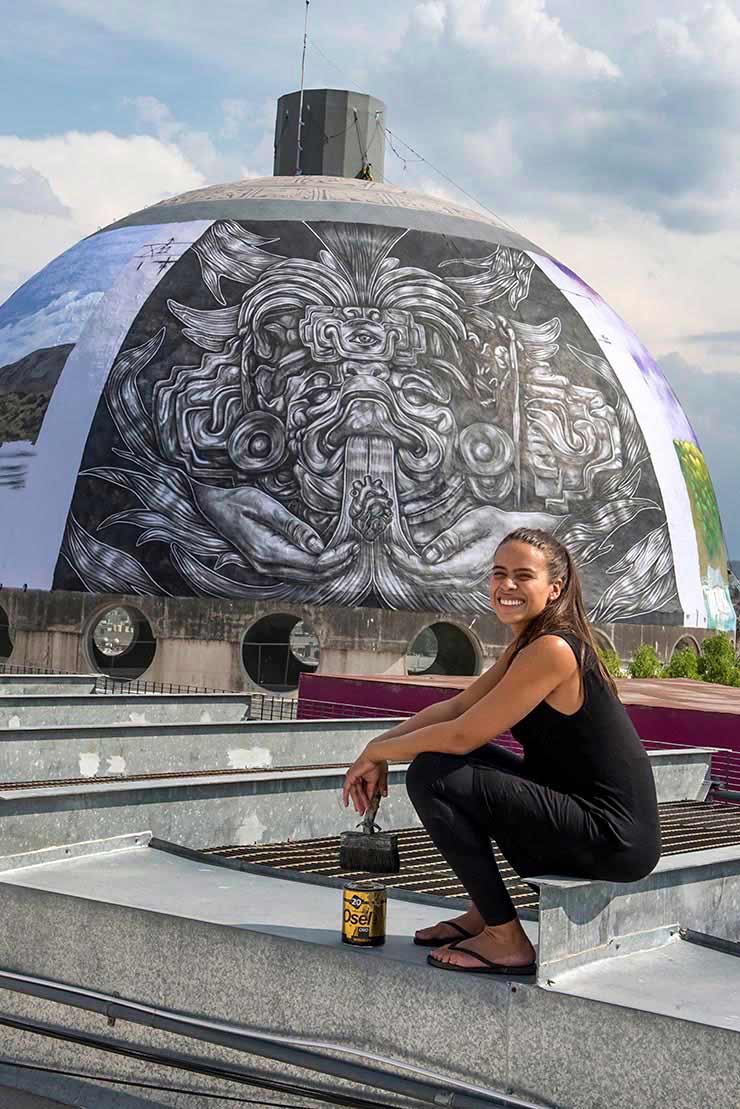
Paola Delfín. Water is One/Mextonia Part 2. Querétaro, Mexico. March-April 2018. (photo © Martha Cooper)
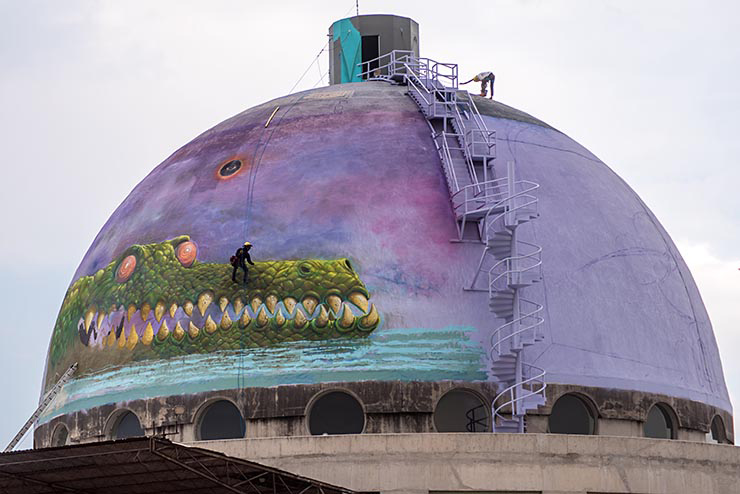
Ryper . Goal. Water is One/Mextonia Part 2. Querétaro, Mexico. March-April 2018. (photo © Martha Cooper)
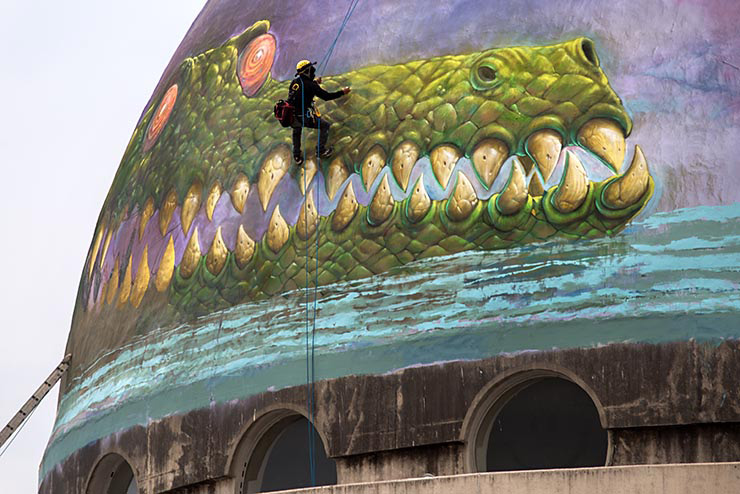
Ryper . Goal. Water is One/Mextonia Part 2. Querétaro, Mexico. March-April 2018. (photo © Martha Cooper)

Mantra. Water is One/Mextonia Part 2. Querétaro, Mexico. March-April 2018. (photo © Martha Cooper)
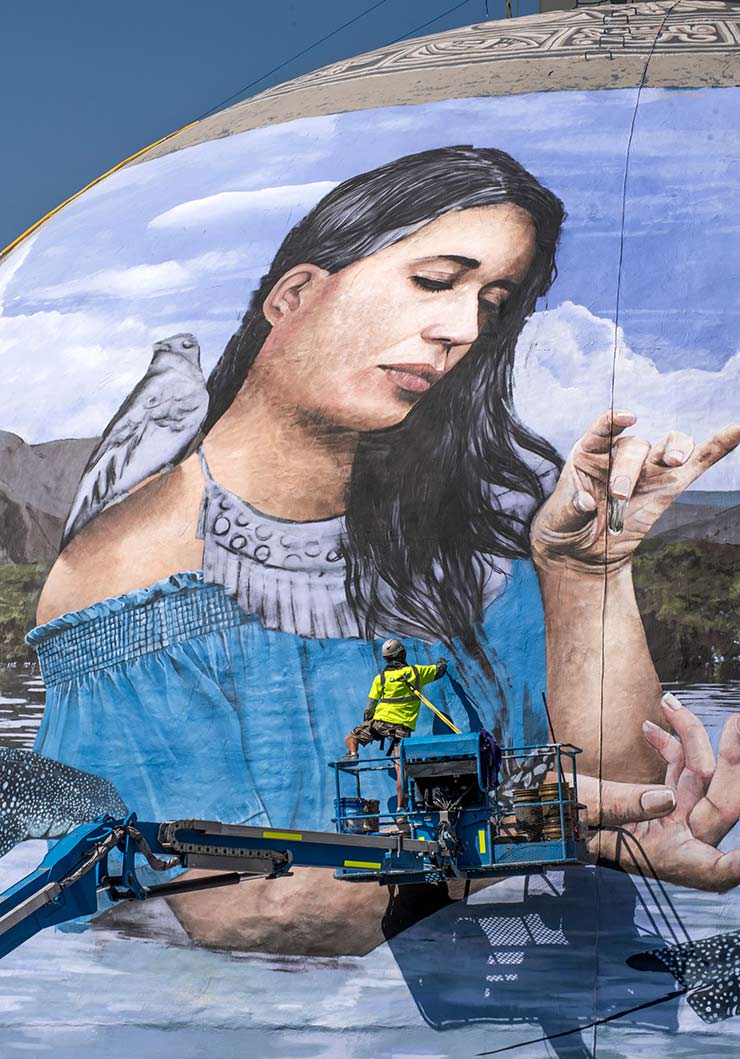
Mantra. Water is One/Mextonia Part 2. Querétaro, Mexico. March-April 2018. (photo © Martha Cooper)
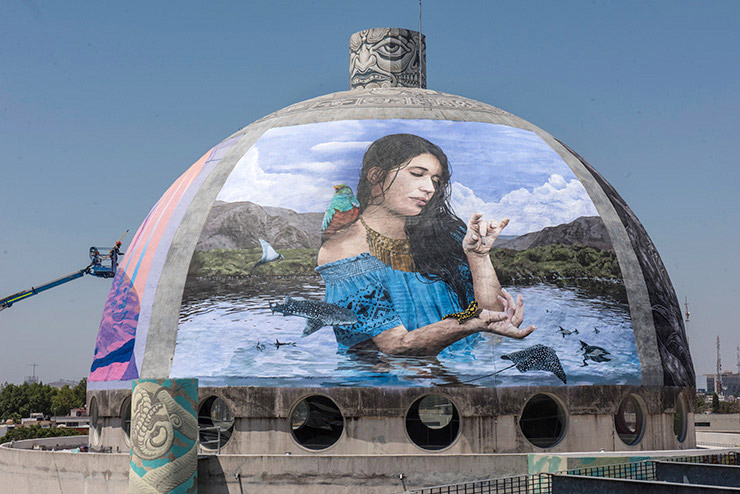
Mantra. Water is One/Mextonia Part 2. Querétaro, Mexico. March-April 2018. (photo © Martha Cooper)
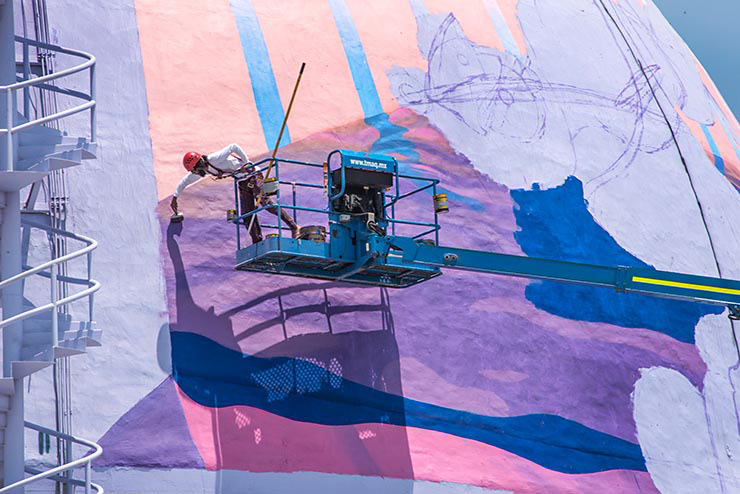
Curiot. Water is One/Mextonia Part 2. Querétaro, Mexico. March-April 2018. (photo © Martha Cooper)

Sänk. Water is One/Mextonia Part 2. Querétaro, Mexico. March-April 2018. (photo © Martha Cooper)
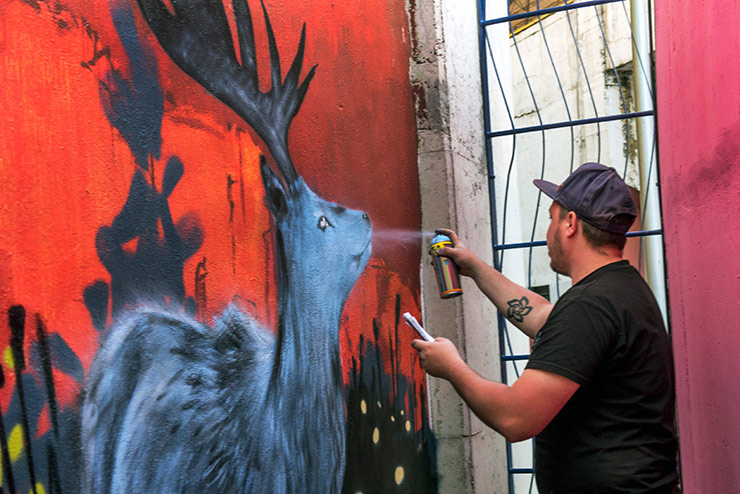
Sänk. Water is One/Mextonia Part 2. Querétaro, Mexico. March-April 2018. (photo © Martha Cooper)
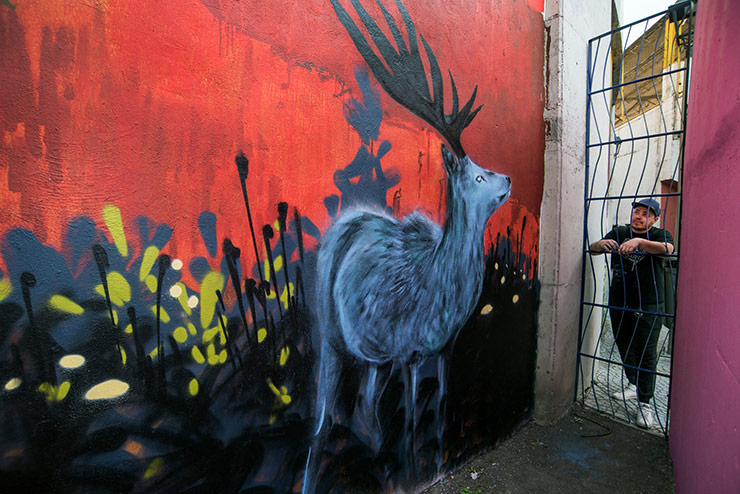
Sänk. Water is One/Mextonia Part 2. Querétaro, Mexico. March-April 2018. (photo © Martha Cooper)
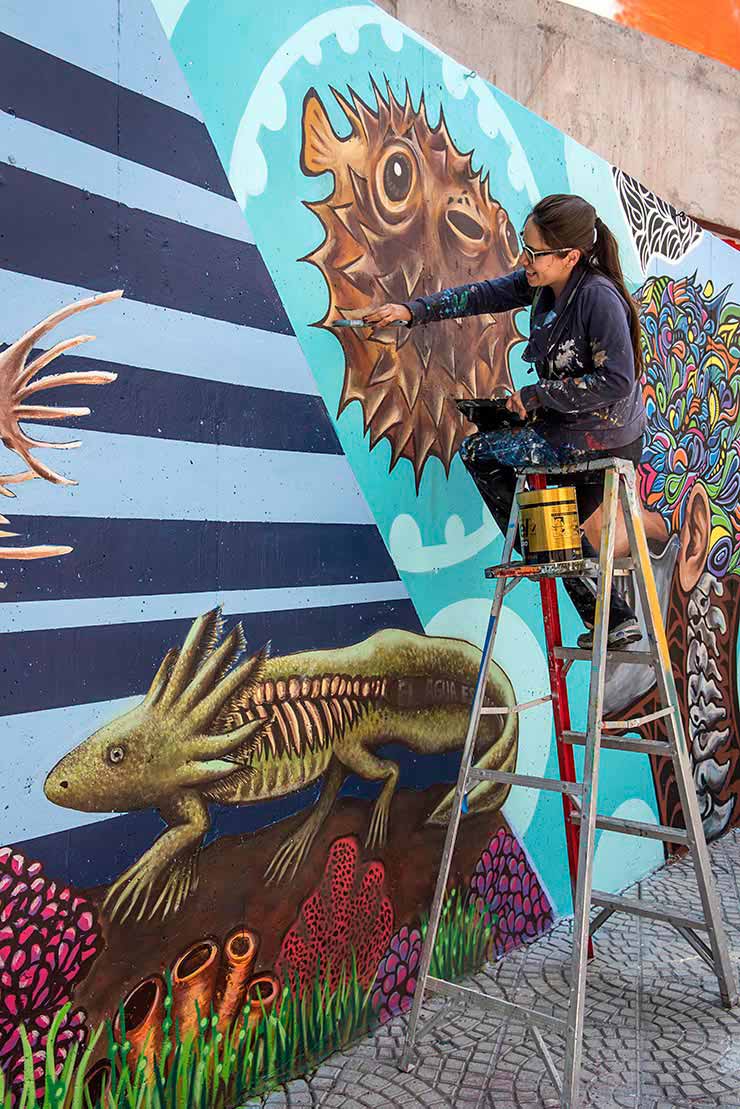
Demencia. Water is One/Mextonia Part 2. Querétaro, Mexico. March-April 2018. (photo © Martha Cooper)
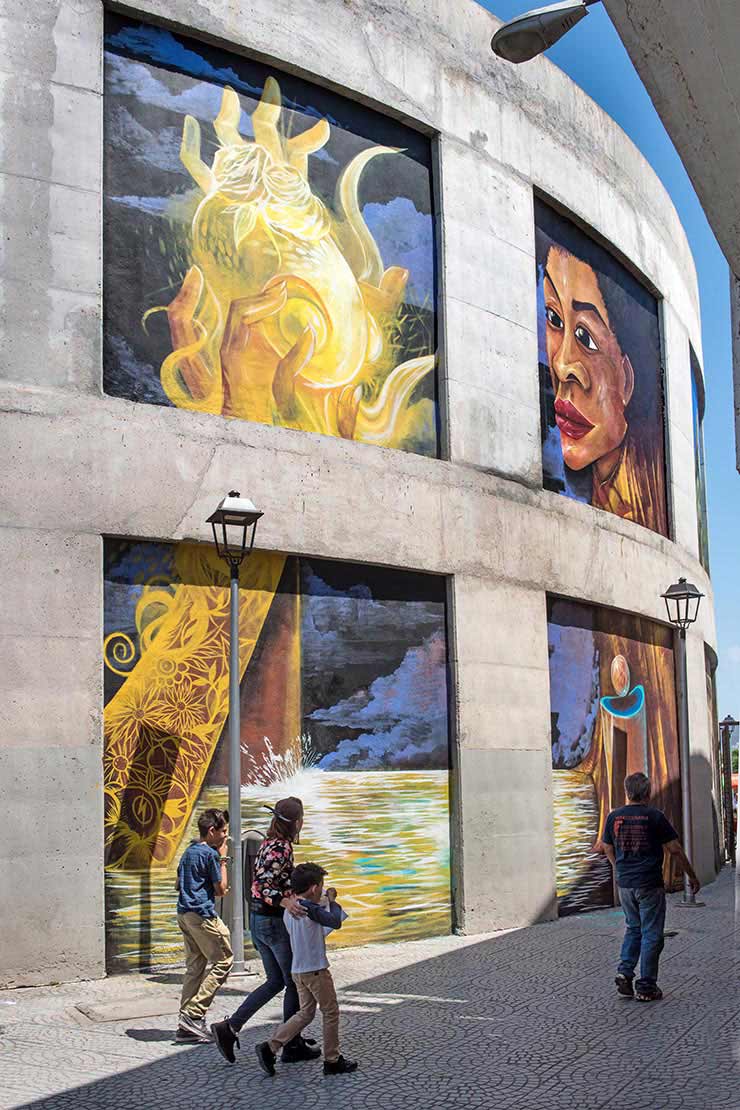
Nosego. Water is One/Mextonia Part 2. Querétaro, Mexico. March-April 2018. (photo © Martha Cooper)

Smithe. Water is One/Mextonia Part 2. Querétaro, Mexico. March-April 2018. (photo © Martha Cooper)
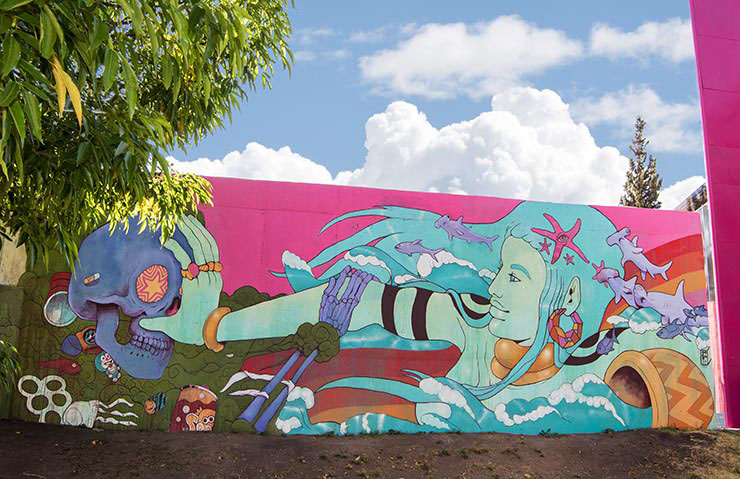
Pogo. Water is One/Mextonia Part 2. Querétaro, Mexico. March-April 2018. (photo © Martha Cooper)
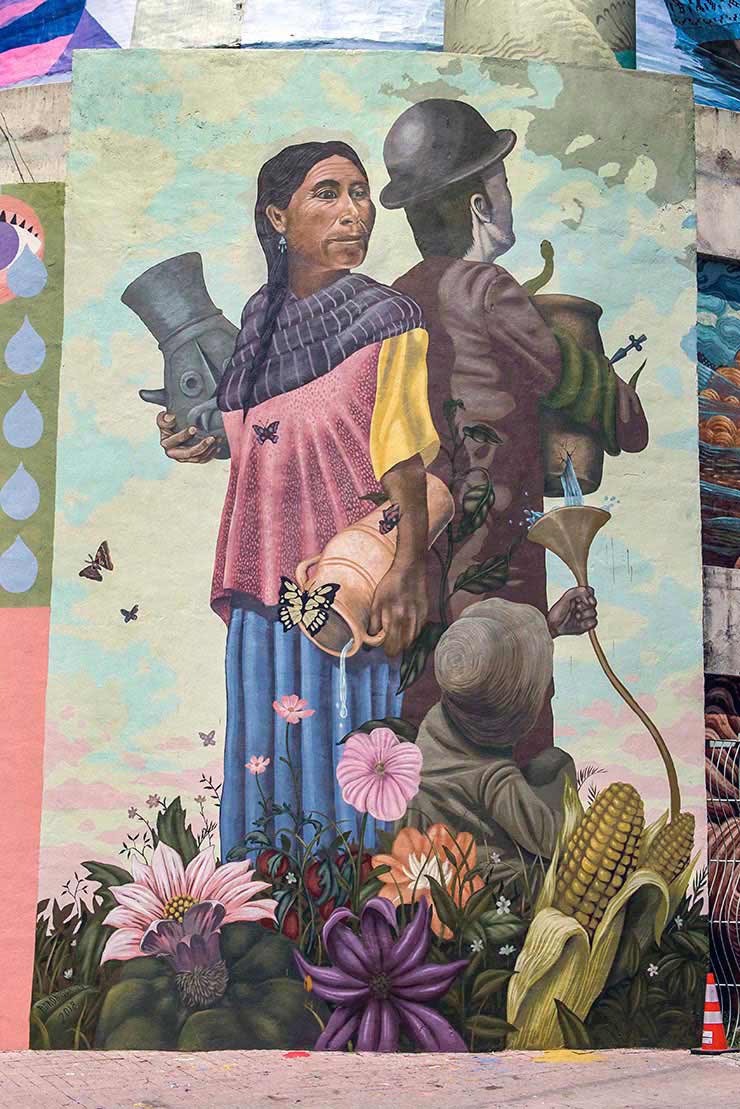
Aaron Glasson. Water is One/Mextonia Part 2. Querétaro, Mexico. March-April 2018. (photo © Martha Cooper)
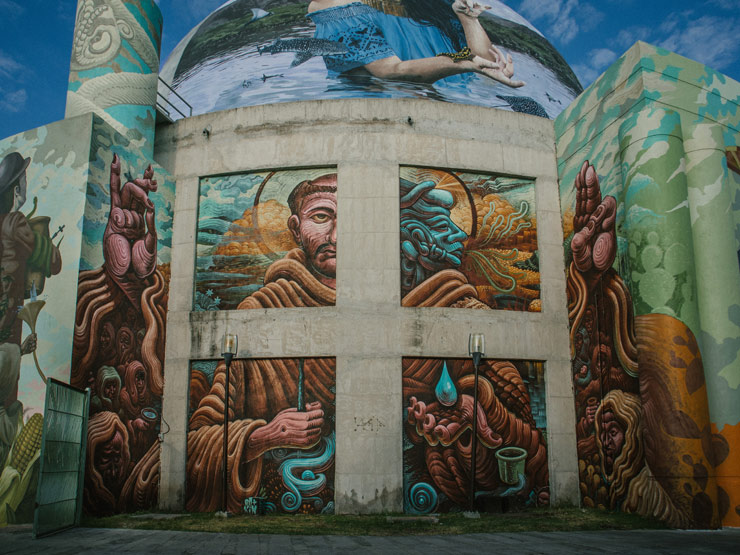
Jason Botkin. Water is One/Mextonia Part 2. Querétaro, Mexico. March-April 2018. (photo © Nueve Art Urbano Team)
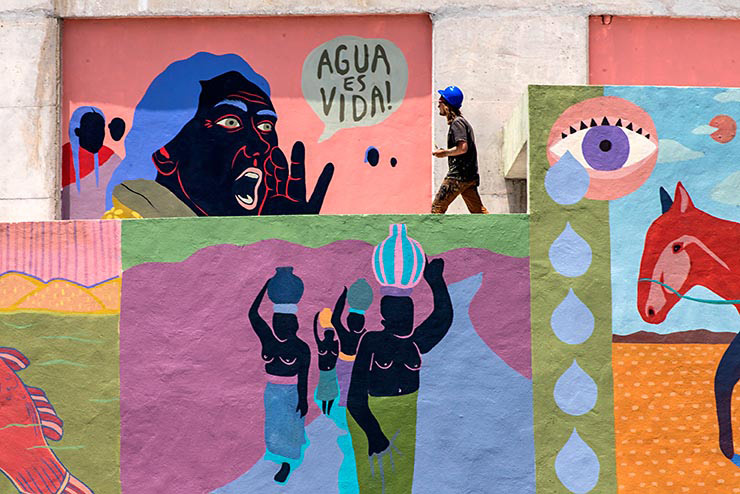
Renata. Water is One/Mextonia Part 2. Querétaro, Mexico. March-April 2018. (photo © Martha Cooper)

Sermob. Water is One/Mextonia Part 2. Querétaro, Mexico. March-April 2018. (photo © Martha Cooper)

Water is One/Mextonia Part 2. Querétaro, Mexico. March-April 2018. (photo © Martha Cooper)
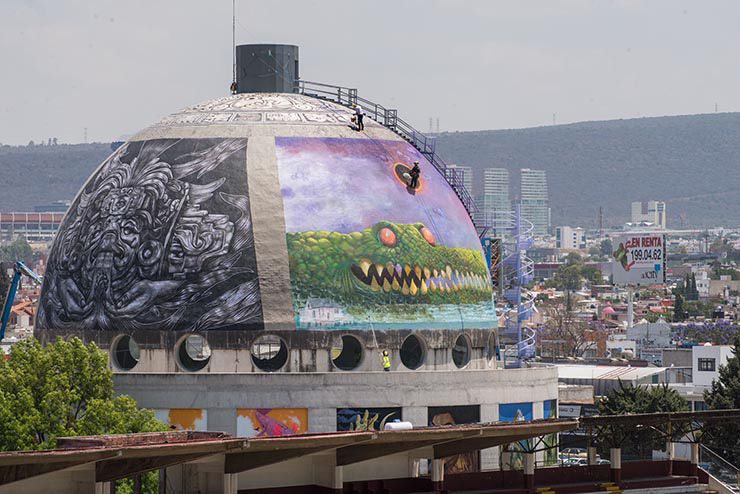
Water is One/Mextonia Part 2. Querétaro, Mexico. March-April 2018. (photo © Martha Cooper)
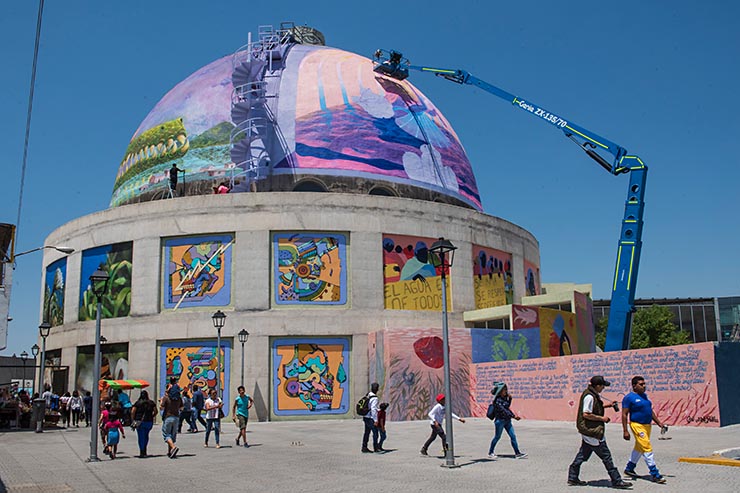
Water is One/Mextonia Part 2. Querétaro, Mexico. March-April 2018. (photo © Martha Cooper)
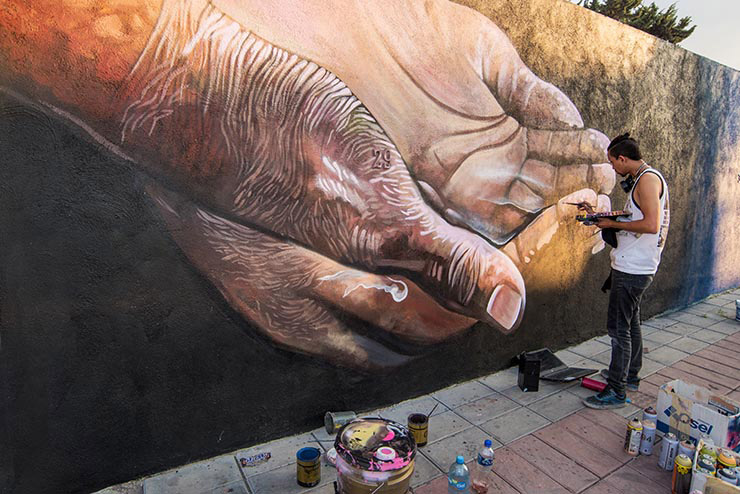
Juez. Water is One/Mextonia Part 2. Querétaro, Mexico. March-April 2018. (photo © Martha Cooper)
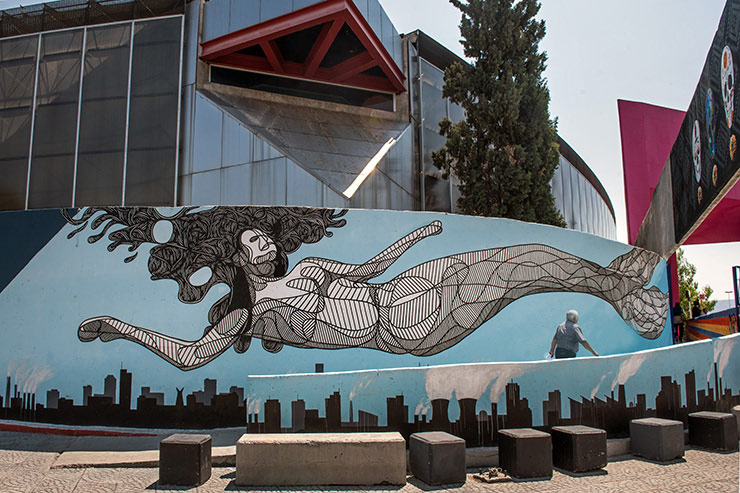
Valiñas. Water is One/Mextonia Part 2. Querétaro, Mexico. March-April 2018. (photo © Martha Cooper)
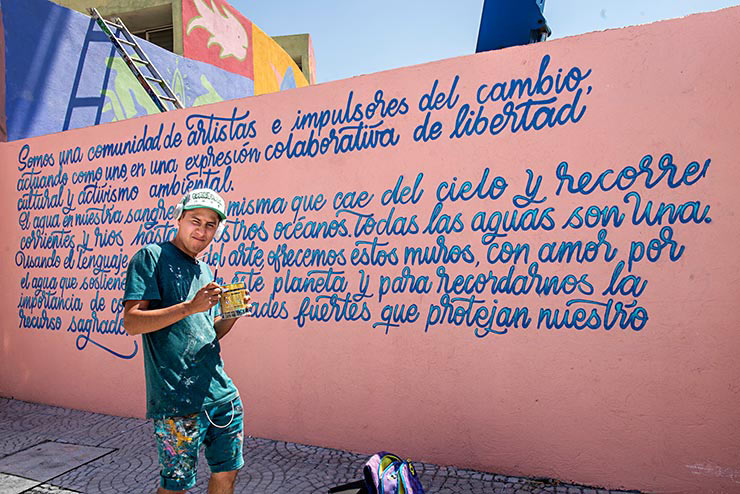
Atole Parra . Solé. Water is One/Mextonia Part 2. Querétaro, Mexico. March-April 2018. (photo © Martha Cooper)
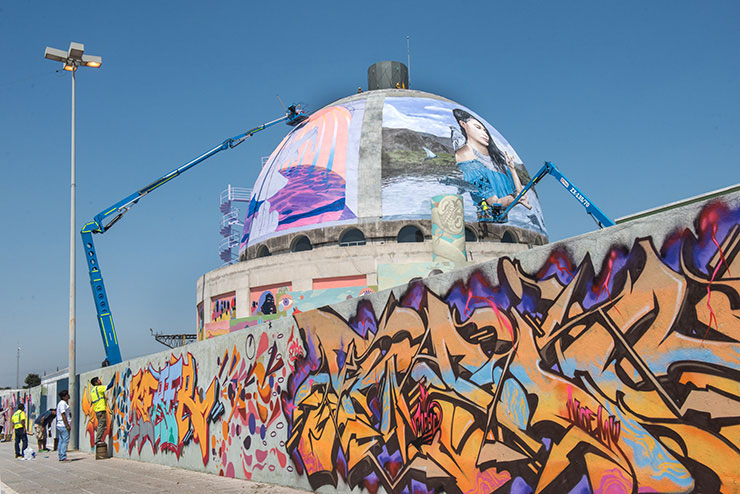
Graffiti Wall. Water is One/Mextonia Part 2. Querétaro, Mexico. March-April 2018. (photo © Martha Cooper)
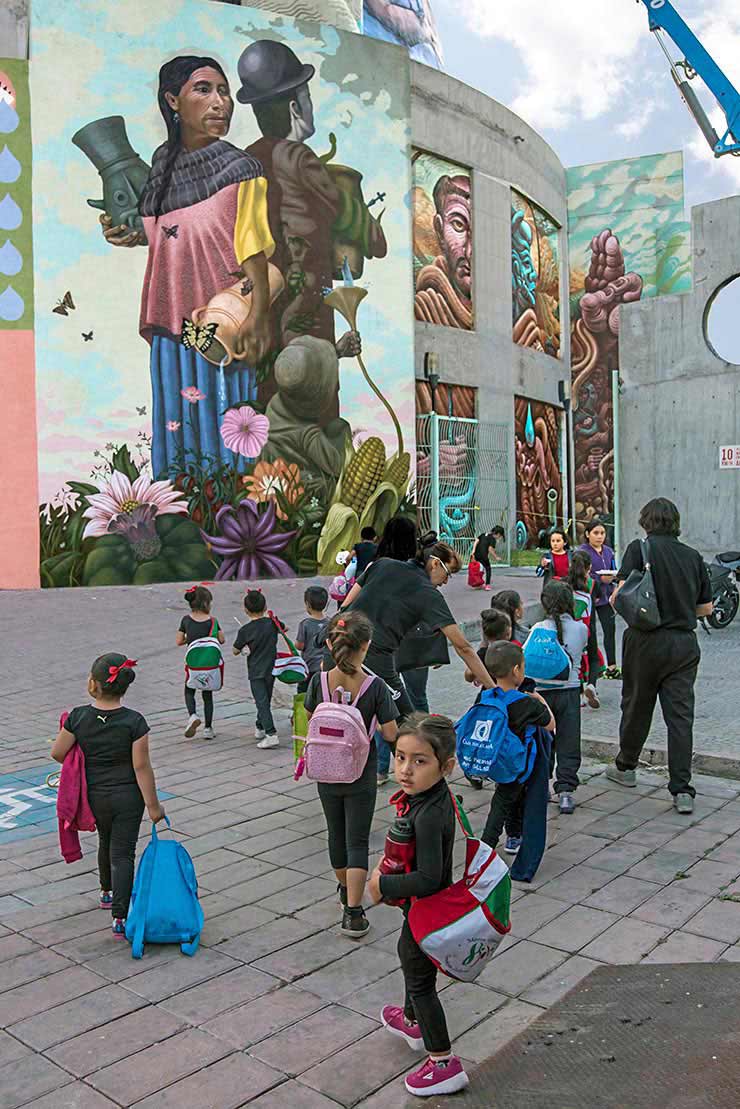
Water is One/Mextonia Part 2. Querétaro, Mexico. March-April 2018. (photo © Martha Cooper)
Artists participating include:
Aaron Glasson (New Zealand)
Curiot Tlapazotl (Mexico)
Dementia (Mexico)
Goal (Mexico)
Jason Botkin (Canada)
Mantra (France)
Nosego (United States)
Paola Delfín (Mexico)
Pogo (Mexico)
Renata (Mexico)
Ryper (Mexico)
Sermob (Mexico)
Smithe (Mexico)
Sänk (Estonia)
For more information on Mextonia please visit Mextonia.com
For more information on PangeaSeed please visit PangeaSeed Foundation
Read this article in Spanish / Leer este articulo in Espanol aqui:
TRANS-GRAFFITI Y EL FESTIVAL TRANSNACIONAL “MEXTONIA
Publicado el 26 de Mayo, 2018
México y Estonia; una pareja improbable. Pero a veces el amor es así. En una época en la que la ortodoxia global es autocomplaciente y obviamente no satisface las necesidades de las personas, quizás no sorprenda que sean los híbridos únicos de fortalezas compartidas los que pueden liderar en el mundo.
Consideremos “Mextonia”.
El retoño que combina las tradiciones… MAS
Our sincere thanks to Martha Cooper for her leadership on this effort as well as her talents documenting the action.
 BROOKLYN STREET ART LOVES YOU MORE EVERY DAY
BROOKLYN STREET ART LOVES YOU MORE EVERY DAY



